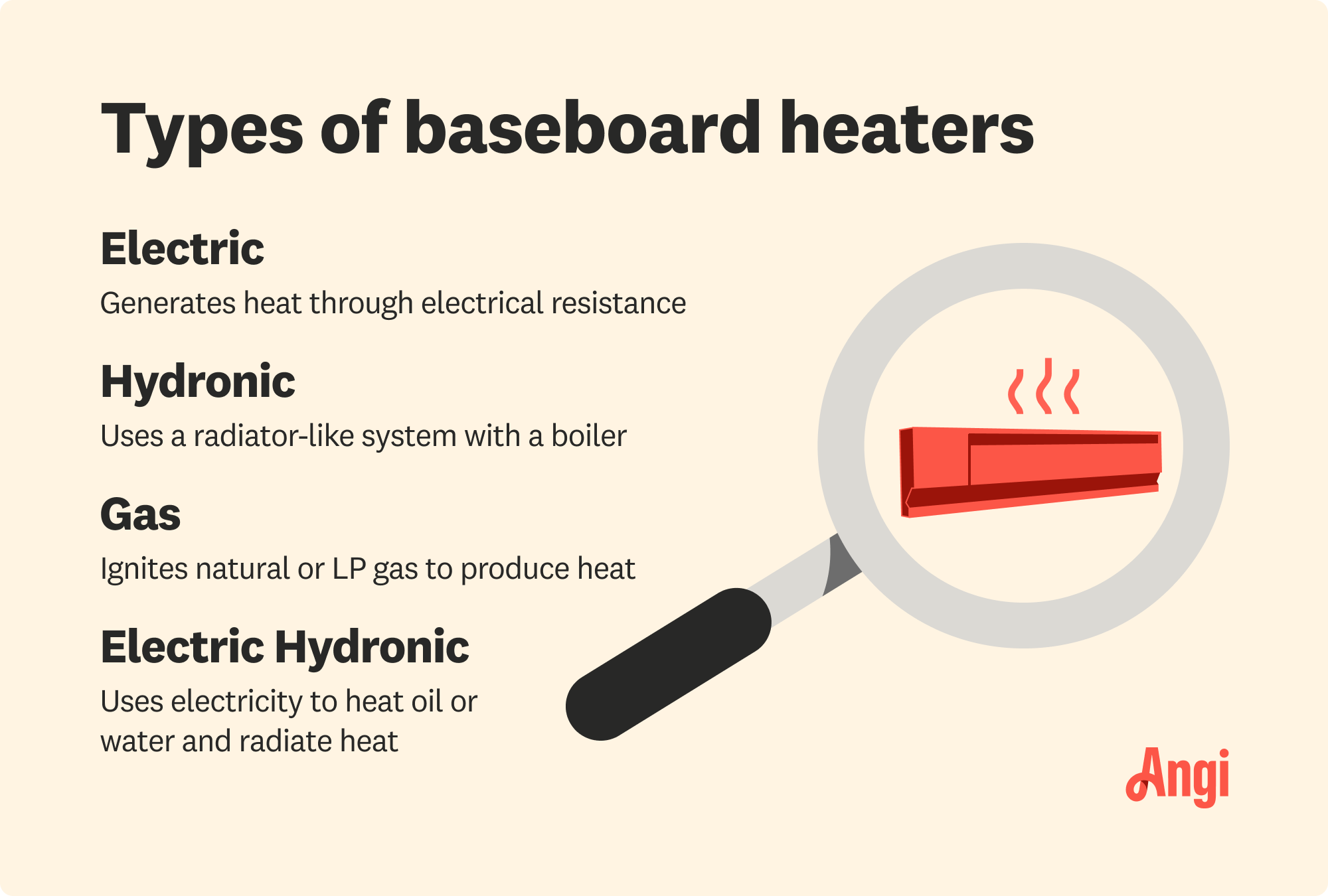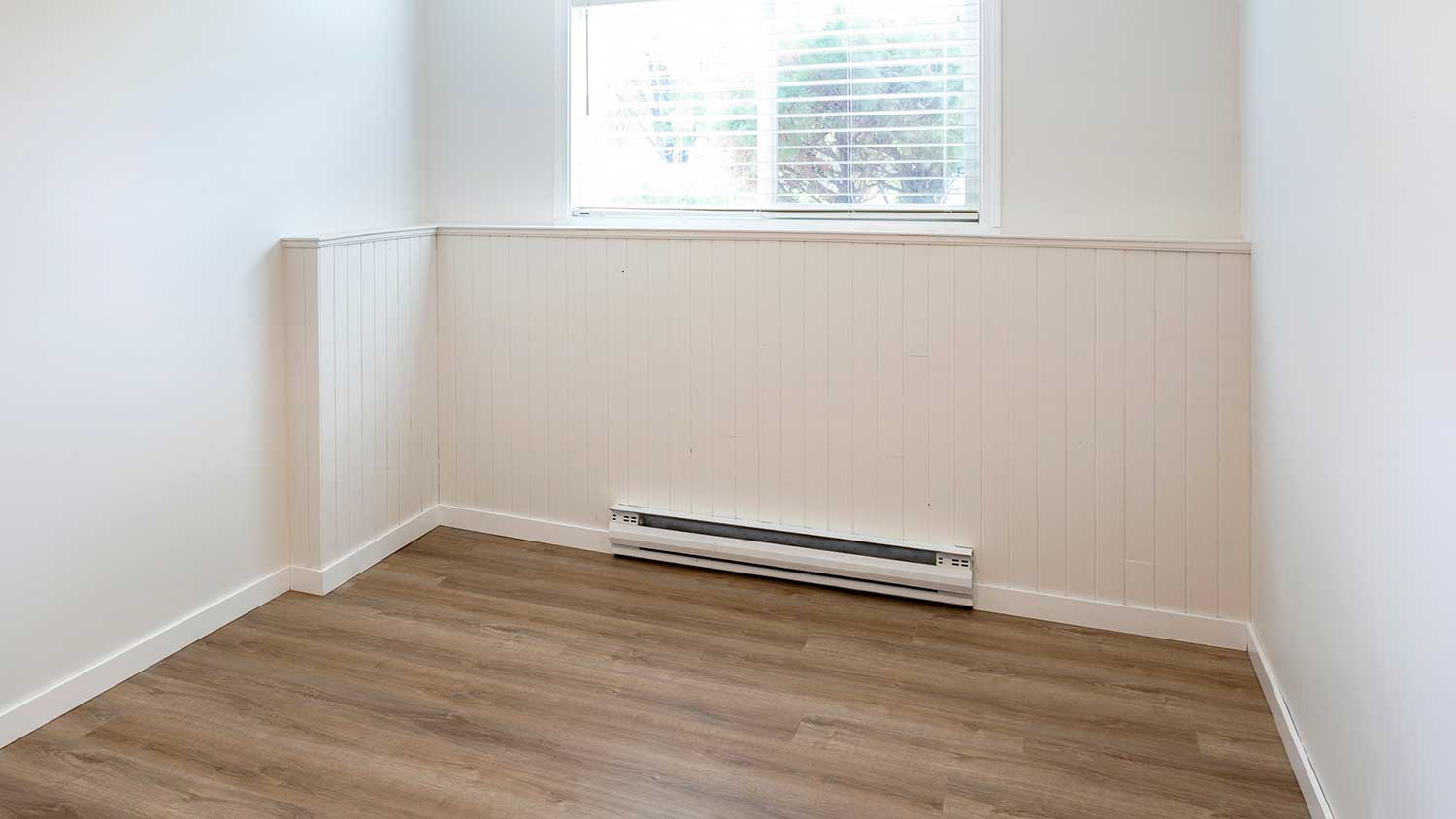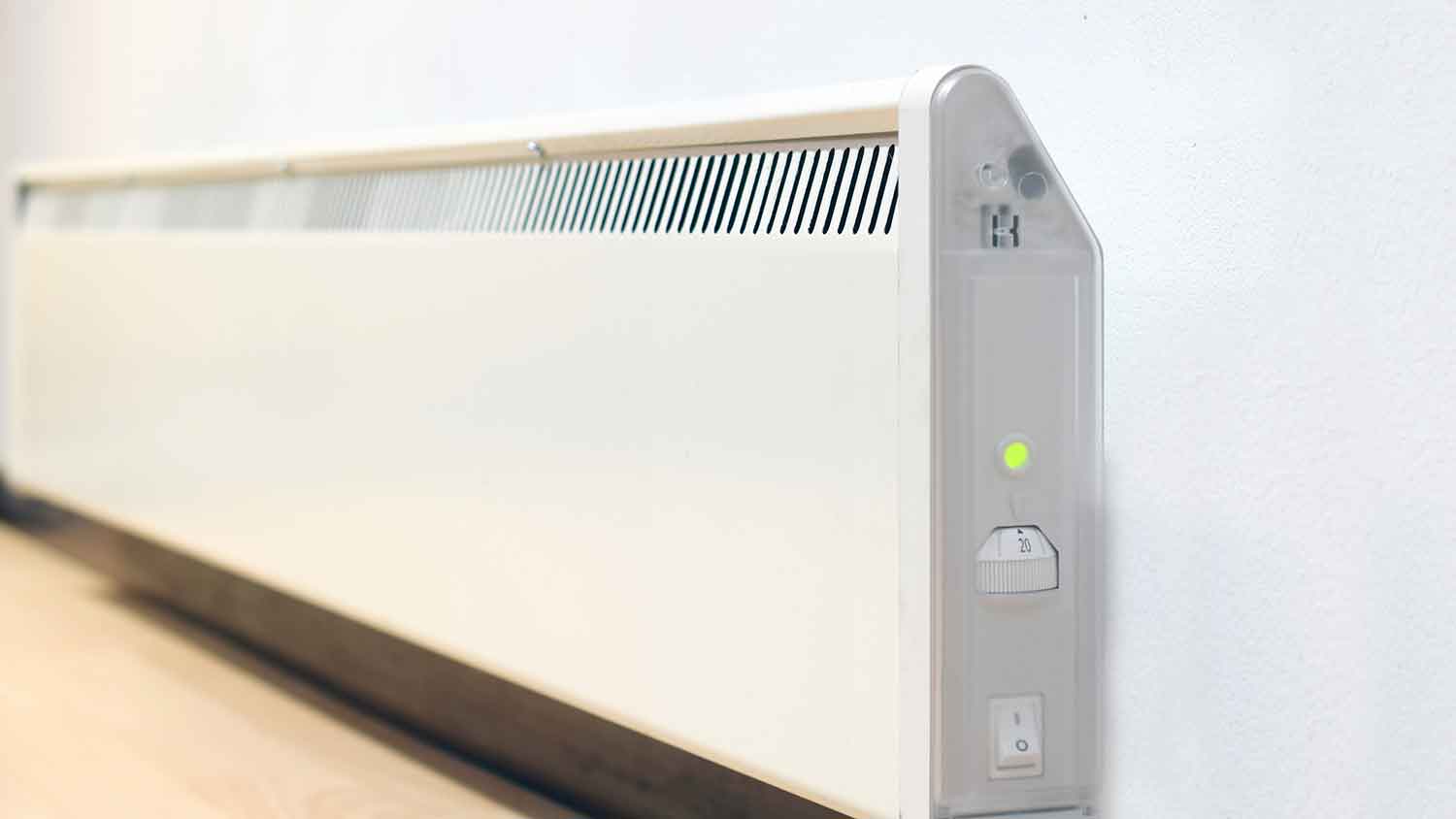
If your furnace is malfunctioning, it could be a faulty control board. Find out what a furnace control board replacement costs for parts, labor, and more.
Ward off frosty nights by choosing the best baseboard heater for your home


Electric hydronic baseboard heaters maintain temperatures longer than electric baseboard heaters.
Electric baseboard heaters warm the room faster than electric hydronic baseboard heaters.
Electric hydronic heaters utilize water or oil to produce heat, while electric heaters rely on electricity.
Are you searching for a home heat source and debating between electric hydronic and electric baseboard heaters? If so, you may be wondering what the difference is between an electric hydronic vs. an electric baseboard heater and which one is the better choice for your needs.
This guide will explain the key differences between these types of baseboard heaters, their pros and cons, and how to hire a baseboard professional for installation.

While both types of baseboard heaters have similarities, such as both utilizing electricity to operate and neither require ductwork or blowers, they also have some significant differences.
The main difference between these types of baseboard heating is that electric hydronic heaters contain a liquid, either water or oil, inside the unit that is warmed by a heating element. Electric baseboard heaters do not contain liquid and use electric coils to generate heat instead.
Electric hydronic heaters can take longer to heat a room, but once they reach the set temperature, they maintain it longer than a standard electric baseboard heater. That’s because the liquid in the electric hydronic heater stays warmer longer than it does with the metal coils that are in standard units, making them more energy efficient.

An electric hydronic baseboard heater is a type of heating device that utilizes liquid, such as oil or water, inside the unit and is heated by electric heating elements. This is a separate type of system from a traditional hydronic baseboard heater, which uses a radiator-like system with a boiler.
Similar to other types of baseboard heaters, electric hydronic baseboard heaters consist of a long metal framework mounted to the base of the wall. Since the liquid retains the heat, this process keeps the room warm even after the unit turns off.
| Pros | Cons |
|---|---|
| Maintains warm temperatures for longer periods of time | Slower to heat up |
| Energy-efficient | Higher installation costs |
| Low noise levels | More costly to maintain |
Homeowners that want a more energy-efficient way to heat a room
People who prefer a less noisy heating option
Those who want consistent heating distribution
One of the biggest benefits of electric hydronic baseboard heaters is that they maintain a warm temperature longer than their counterparts. The liquid in the unit retains heat longer than the metal coils in an electric baseboard heater, which keeps the room warm even after the unit turns off.
This feature makes electric hydronic units more energy-efficient because it doesn’t turn on and off as frequently as an electric baseboard heater. This type of heating is also less noisy when running than other systems.
The downside of these heaters is that they are slower to heat up. That’s because it takes the liquid longer to get hot than the metal coils in electric baseboard heaters. Another major downside is that hydronic baseboard heaters are typically more expensive. Electric baseboard heaters cost between $200 and $1,100 per unit, whereas hydronic heaters range between $400 and $1,200 each.
Since these units have additional working parts, such as pipes that contain the liquid, they should be maintained by a baseboard heating professional and may cost more to service, depending on the repair or replacement.

An electric baseboard heater is also a type of heating system with a metal framework installed on the base of the wall. However, this type of baseboard heater has electric heating elements in metal pipes rather than liquid.
It draws cool air to the base, heats it, then releases the warm air into the room. This is also known as convection heating. The most common type is hardwired into your electrical system, but there are also electric baseboard heaters that plug into outlets.
| Pros | Cons |
|---|---|
| Simple installation | Expensive to operate |
| Less expensive to install | Potential safety hazard |
| Heats room quickly | Doesn’t maintain temperature as well |
Supplemental heating
Homeowners looking for a heating system on a budget
Those who desire a quick heating solution
A huge upside of electric baseboard heaters is that they are less expensive to install than other models. Other heating systems, such as HVACs and furnaces, can cost thousands of dollars to install. So, this can be a perfect heating solution for homeowners on a budget.
Electric baseboard heaters are relatively easy to install because they only need to be hardwired into your electrical system. If you only need supplemental heating for a particular room, you can opt for one that plugs right into an outlet. Another perk is that these heaters are quick to warm a room since they don’t contain liquid like hydronic heaters do.
Although the cost of installing electric baseboard heaters is less expensive, the amount it costs to operate them can be pricey. Your monthly utility usage and bill depends on many factors, such as the number of units, usage, home size, climate, and if the house is properly insulated. Operating electric baseboard heaters costs between $500 and $1,000 or more per month.
Another con to consider is that electric baseboard heaters tend to have hot surfaces to the touch, which can be a safety hazard and cause burns to the skin. Last but not least, electric heaters do not retain heat like hydronic units because they do not contain liquid, which results in them being less energy efficient.
Now that you know the difference between an electric hydronic and an electric baseboard heater, let’s compare them further to help you determine which type is better for your home.
As far as installation prices, electric baseboard heaters are less expensive to install. Prices start at around $200 per unit compared to $400 for a hydronic baseboard heater. However, while installation costs are lower, standard electric heaters are more expensive to operate than hydronic heaters.
Both types of baseboard heaters are simpler to install than other types of heating systems because neither requires ductwork. Since they utilize electricity as a fuel source, each type has to be hardwired into your electrical system.
You should hire a professional baseboard installation company near you to install whichever type of heaters to ensure it is placed correctly. Working with electricity can be extremely dangerous, so it’s best to leave it to a pro. However, there are some electric models available that you can plug into an outlet.
Electric hydronic baseboard heaters have additional components, such as fluid and piping, that may require more maintenance than the simple design of a standard electric baseboard heater. It’s recommended that any type of heating system be serviced by a professional at least once per year to ensure it is operating correctly and efficiently.
Baseboard heaters are notorious for their long lifespan. Of course, how long they last depends on several factors, such as the amount of use, whether they are installed correctly, and whether they are properly maintained. However, each type can last 15 to 20 years or more if they are well-maintained.
Robert and his team were very professional and I would highly recommend them.
Austin Allread of Helping Hands installed my Drop-in range and he was polite, approachable, funny and very efficient. He was knowledgeable about what needed to be done. I love this guy and he's going to be doing some other work for me in the very near future.
Very professional. Meticulously worked to prepare my house and separate garage for painting. Then they took the same care when actually painting the house and garage. Two coats and trim looks fantastic! No dripping and clean edges. They didnâ t get any paint on our new roof! I would...
They r very professional they do a excellent job and the go above and beyond on what I needed done
Hard worker and does the right thing
These guys are very experienced, show up when they say they will and have fair prices. They took down what I would call a very precarious tree near my home and garage and left the place cleaned up. Got an estimate on another tree when they left. I can't imaging not hiring them again for any...
Come out to the house on a Sunday and go above and beyond. I would recommend them to anybody
Technos and Jose were great to work with even though we are out of state everything was done correctly and professionally. Highly recommend this company.
I contacted Terry and his son to do some repairs before we sold our house, and they handled everything I threw at them from finishing up an old bathroom remodel of mine to repairing the ceiling and trim in another bathroom. They repaired shingles and roof decking. They removed wood rot and...
Wonderful person and hard worker. Cares about the job and people.
From average costs to expert advice, get all the answers you need to get your job done.

If your furnace is malfunctioning, it could be a faulty control board. Find out what a furnace control board replacement costs for parts, labor, and more.

When your HVAC system is acting up, it could be the blower motor to blame. See how much blower motor replacement costs and what impacts the price here.

The average boiler installation cost depends on size, system type, and other factors. Keep reading to learn the cost of a new boiler.

A whole-house humidifier costs between $400 and $800, but can have an ROI of 40%. Learn if adding this HVAC appliance is worth it for you.

With so many types of furnaces out there, how do you know which one is best for you? Explore our guide to the five main types and get your home warmed up.

There are a few different types of refrigerant for AC systems, but some contain environmental hazards. Learn about the five main types of refrigerant.